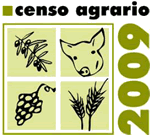Agrarian Census 2009 / Objectives
|
|
| What is it? |
The Agrarian Census is a large-scale statistical operation, performed at intervals in order to bring together, process and disseminate data on the structure of the agrarian sector of a country. The United Nations Food and Agriculture Organisation (FAO) promotes the carrying out at intervals of agrarian censuses in every country. |
| What data? |
The main data gathered is as follows: size of operations, tenancy regime and exploitation of lands, cultivated areas, irrigation, livestock, labour and other agrarian consumables. |
| Who? |
The National Statistics Institute is the body responsible for this operation. |
| When? |
The first agrarian census in Spain dates back to 1962, and fresh census were subsequently conducted in 1972 and 1982.
As of Spain's entry to the European Union in 1986, the agrarian census have been conducted in years ending in 9, observing the European guidelines standardising the conducting of the Agrarian Census in all Member states. |
| How? |
Since 1 October 2009, the INE had been collecting the information from Agrarian Census 2009, through the use of two questionnaires:
- One census questionnaire, which must be completed by all owners of agricultural and/or livestock operations, with basic data regarding the operation.
- One additional questionnaire, intended for those owners selected in a random sample, in which complementary data is collected regarding the production methods of the operations.
|
| What is it for? |
The information obtained from agrarian census is the great importance of the drafting of policies intended to foster rural and agrarian development and to consolidate a sustainable production model guaranteeing quality and food safety. |
|

